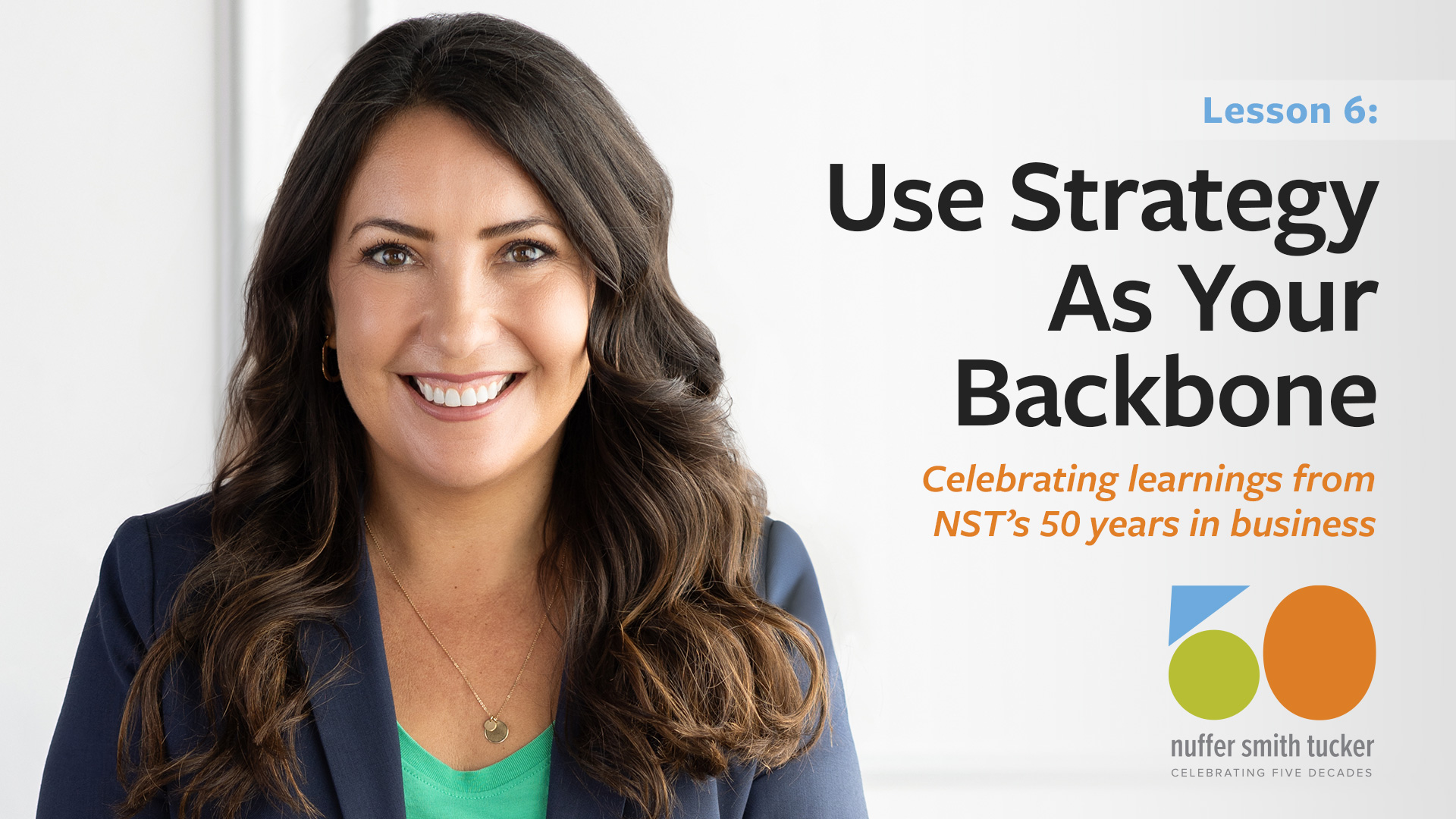This column is part of a 2024 series celebrating learnings from NST’s 50 years in business.
We’ve had the good fortune of working with companies that at times have been overflowing with ideas, many of them you might even consider good ideas. In these instances, leaders can be challenged by which ones to implement and which ones to leave on the table. On the other end of the spectrum, we’ve worked with organizations stuck in old routines and status quo, with ideation falling flat. But there is good news — a sold strategy can help aid decision-making and provide inspiration for strategic action.
In fact, organizations that use strategy as their backbone are more effective at aligning teams to reach a shared vision or end game. And at the root of a solid strategy is a solid strategic plan.
NST, finding inspiration from founder Bob Smith and former CEO Kerry Tucker, has been helping companies, trade groups, and nonprofits with organizational planning since its inception. While we’ve heard countless efforts of strategic planning gone wrong, we bring a simple and effective process to a complex and important topic. NST views strategic planning as a process for answering four simple questions:
- Where are you now as an organization?
- Where do you want to be in the future?
- How will you “get there”?
- And, how will you know when you have arrived?
Importantly, we counsel clients — and often remind ourselves — that a strategic plan is only effective if it gets put into action and used as the foundation for all efforts of an organization. But this commitment to strategy doesn’t have to mean rigidity. We believe the best plans are agile within a strategic framework.
For NST, our strategic plan is rooted in three key strategic priorities: People, Partners, and Promotion. Putting strategy at the core of all we do and counseling clients to do the same is part of our lasting power and why our partners continue to entrust us.
Read about other lessons learned during our 50-year journey.

